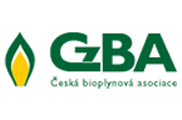A floating sponge could help remove harmful algal blooms
Date: 4.8.2023
In the peak heat of summer, beachgoers don't want their plans thwarted by harmful algal blooms (HABs). But current methods to remove or kill toxin-producing algae and cyanobacteria aren't efficient or practical for direct applications in waterways.
 Now, researchers reporting in ACS ES&T Water have coated a floating sponge in a charcoal-like powder. When paired with an oxidizing agent, the technique destroyed over 85% of algal cells from lake and river water samples.
Now, researchers reporting in ACS ES&T Water have coated a floating sponge in a charcoal-like powder. When paired with an oxidizing agent, the technique destroyed over 85% of algal cells from lake and river water samples.
The researchers started with a porous sponge made of melamine and developed a powdered biochar from shrimp shells. They sandwiched a thin layer of polyvinyl alcohol between the sponge and the biochar, linking the layers together at 572 degrees Fahrenheit.
In combination with a persulfate-based oxidizing agent, the floating sponge damaged the membranes of about 90% of the M. aeruginosa cells in lab dishes within five hours. After the membranes split apart, the cells released their internal contents, which rapidly broke down into smaller components.
In addition, the researchers applied the catalyst sponge and persulfate system to real-world lake and water samples, and found that it inactivated more than 85% of the algal cells. Based on the results, the team suggests that the new system could be a successful algal remediation technique in environments affected by blooms.
Image source: Deng et al. (2023), ACS ES&T Water.























